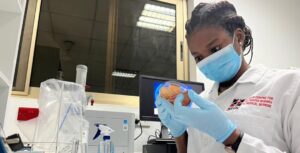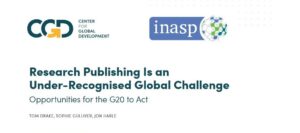Study shows heightened risks for premature babies in Bangladesh
A recently published study in Bangladesh titled Clinical outcome of the late preterm infants shows that premature babies can develop major neonatal complications that need admission in a neonatal intensive care unit.
The study has found that late preterm or premature babies born before 37 weeks instead of the normal 40 weeks, have higher risks of developing health complications like jaundice, sepsis (a life-threatening infection) and respiratory problems than normal or term babies.
It is important to understand these risks and how to reduce them because experts estimate that 48% of newborn deaths in Bangladesh are due to complications from premature birth (UNFPA, UNICEF).
The retrospective study evaluated the short-term clinical outcome of late pre-term babies (born at 34-36 weeks) in a tertiary hospital from January 2013 to December 2014. A total of 3,749 babies were delivered during this period of which 513 were late pre-term. Admission to the neonatal intensive care unit after birth was needed in the case of 66 (12.9%) late pre-term babies and 36 (1.1%) term babies.
Of the babies admitted to neonatal intensive care, 11 of the pre-term babies required ventilation, compared with just two of the full-term babies. Seven of the pre-term babies died, whereas all of the full-term babies were discharged from the unit.
The study also found higher incidences of complications like jaundice (14.4%), sepsis (6.2%), respiratory distress syndrome (2.9%) and transient tachypnea (abnormally rapid beating of the respiratory, 2.3%) in comparison to term or fully grown babies born between 37 and 40 weeks.
“In the study, the rate of critical care admission and the need for respiratory support in late preterm infants were high in comparison to term infants,” observes Dr Lutfun Nahar Begum, the lead author of the study published in the Journal of Bangabandhu Sheikh Mujib Medical University. “Respiratory morbidity is nearly 14-fold higher in late preterm when compared with term infants. In the study, respiratory distress syndrome was seen in 15 late preterm babies compared to only one in term baby.”
She explains: “One of the main reasons for deaths of preterm babies in Bangladesh is lack of nutrition in mothers, which is why we have very high incidence of low birth weight babies among the premature babies.”
“There is awareness but I still believe that lack of knowledge of optimal diet and quality care and multiple pregnancies are responsible for such high incidence of deaths of premature babies,” she adds.
In addition, she notes limitations in facilities: “Unlike in developed countries, tertiary hospitals in many cities in Bangladesh lack minimum life support facilities like mechanical ventilators, incubators, blood pressure monitor, pulse oximeter, continuous positive airway pressure (CPAP) and x-ray machines.”
For more information: Journal of Bangabandhu Sheikh Mujib Medical University, Dr Lutfun Nahar Begum, Farzana Ahmed, Kulsum Haq and Lima Lisa Mallick, Clinical outcome of the late preterm infants Vol 10, No 3 (2017), Pages 132-34. The journal and the article are made available online on the BanglaJOL platform, which is supported by INASP.
About the Journal
Journal of Bangabandhu Sheikh Mujib Medical University is published by Journal of Bangabandhu Sheikh Mujib Medical University.
About BanglaJOL
BanglaJOL is a database of journals published in Bangladesh. It was initiated in June 2007 and officially launched in September 2007 with the support of INASP. The objective of BanglaJOL is to give greater visibility to the participating journals, and to the research they convey. It is managed locally by the Bangladesh Academy of Science (BAS). It provides open access to the full text of research articles published in 142 different journals from a wide range of academic disciplines and genres.
About INASP
Founded in 1992, INASP is an international development charity working with a global network of partners in Africa, Latin America and South Asia. In line with the vision of research and knowledge at the heart of development, INASP works to support individuals and institutions to produce, share and use research and knowledge, which can transform lives.
INASP’s approaches are based on the core pillars of capacity development, convening, influencing and working in partnership. INASP promotes equity by actively addressing the needs of both men and women across all our work and addressing issues of power within the research and knowledge system. INASP has projects in 28 countries, supporting all aspects of research and knowledge systems, from facilitating the provision of information to researchers to helping parliamentarians and civil servants to use research and evidence in policy making.
Disclaimer:
Research published in journals hosted on the BanglaJOL platform is selected by the journals in accordance with their own editorial processes and criteria. INASP and BanglaJOL provide hosting and guidance on good practices but are not involved in selection of research.
For further information
Naimul Haq, Communications Consultant, INASP
Email: NHaq@inasp.info
Dr Sangita Shrestha, Communications Officer, INASP
Email: sshrestha@inasp.info

 Previous Post
Previous Post Next Post
Next Post


